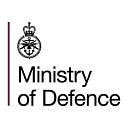
Better than fiction: Does Skynet really exist?
How Britain’s satellites continue to secure our place in space
If you were to ask anyone “What is Skynet?” their first response would probably be the murderous computer from the 1984 blockbuster The Terminator. But by the time the famous robotic assassin stalked the cinema screen, the actual Skynet had already been in operation for decades — silently circling above us in space.
But what is the truth behind Skynet? And do we have anything to fear? While it’s not quite as far-fetched as the film franchise, the true story of Skynet is still an amazing feat of science and technology.
The origins of Skynet began in the 1960’s with Britain caught in the midst of the Cold War. The United States and the Soviets were vying for supremacy and the Space Race had seen incredible leaps in technological advancements on both sides.
Britain found itself trying to keep pace with the two titans, whilst also trying to manage further dissolution of the British Empire. The breakup left Britain with a unique problem — it had military forces stationed across the world, from the South Atlantic to South East Asia, and trying to talk to them all was proving difficult for home command.


In response to this communications issue, Britain looked to space for the answer, and scientists were put to work on developing a space-based communication capability. British military minds had actually been some of the first to promote the idea of using satellites for communications. In 1945, RAF Officer Arthur C. Clarke wrote an article for Wireless World in which he described the concept of using satellites in 24 hour orbits to broadcast television programmes.
Despite this, it wasn’t until the end of the 1960’s that Britain developed its own satellite communication capability, which they named Skynet.
Britain launched Skynet 1A in 1969 from the USA’s Cape Kennedy Complex, and her sister satellite 1B was launched the following year. Unfortunately, neither of these satellites were successful but, as technology evolved, two more satellites (2A and 2B) were launched in 1974. 2A was destroyed by the Earth’s atmosphere but, in September 1974, 2B became the first successful non-amateur communication satellite built outside of the USA or USSR.
The Skynet 3 project was abandoned in the 1970’s as Britain began to rely on US and NATO satellites. However, this would soon change. Lessons learned during the Falklands War in 1982 once again highlighted the strategic importance of satellite communications, and the danger of an over reliance on foreign networks.
So, by 1984 when The Terminator hit our screens, Skynet 2B was already a decade old and beginning to reach the end of its useful life. The Ministry of Defence was already working on Skynet 4, which would ensure secure, British-made satellite communication capability for years to come.
Skynet 4A, 4B, and 4C were then launched between 1988 and 1990, with 3 more (4D, 4E, and 4F) following between 1998 and 2001. The growth in communications requirements and technology saw four more satellites (Skynet 5A, 5B, 5C, and 5D) launched between 2007 and 2012. Each subsequent satellite contained more and more advanced technology, ensuring they met the ever-increasing demands of the UK and its allies.
Now, over 50 years since the launch of Skynet 1A, there will be a £500 million investment in the next generation: Skynet 6A. This upgrade will deliver more capacity, speed and greater versatility than its predecessor system. With an ever-increasing focus on the importance of real-time information gathering, the growth of drone technology, and the requirement for all parts of the UK Armed Forces to be able to communicate and coordinate, the capabilities offered by Skynet 6 will continue to ensure that these needs are met.

So, do we have anything to fear from Skynet? The answer is no. However, while space may no longer be the final frontier, it could become the next battleground.
Nowhere else in Defence is this better understood than in Strategic Command (also known as UKStratCom). UKStratCom is the area of the military that oversees much of Britain’s space-based activity. It’s also the organisation which will work with UK industry to bring Skynet 6A through development and into operation.
As the future thinkers for Defence, UKStratCom already recognise the importance of Space and the strategic advantage that it offers to our Armed Forces. They also recognise the need to counter the threat of allowing others to seize the initiative in space. Commander UKStratCom, General Sir Patrick Sanders, warned at this year’s Air and Space Power Conference that space control was one of the key areas in which states like Russia and China were actively working to gain an advantage over Britain and its allies.
Further development of Skynet is almost certain as the UK continues to push the technological boundaries of what the UK Armed Forces can do, and the demand for ever better communication capability increases. However, it will require thinkers like General Sir Patrick Sanders and those in UKStratCom who understand why space is important, what the threats that it poses are, and seizing the advantages it offers to ensure that Britain remains safe and secure.
